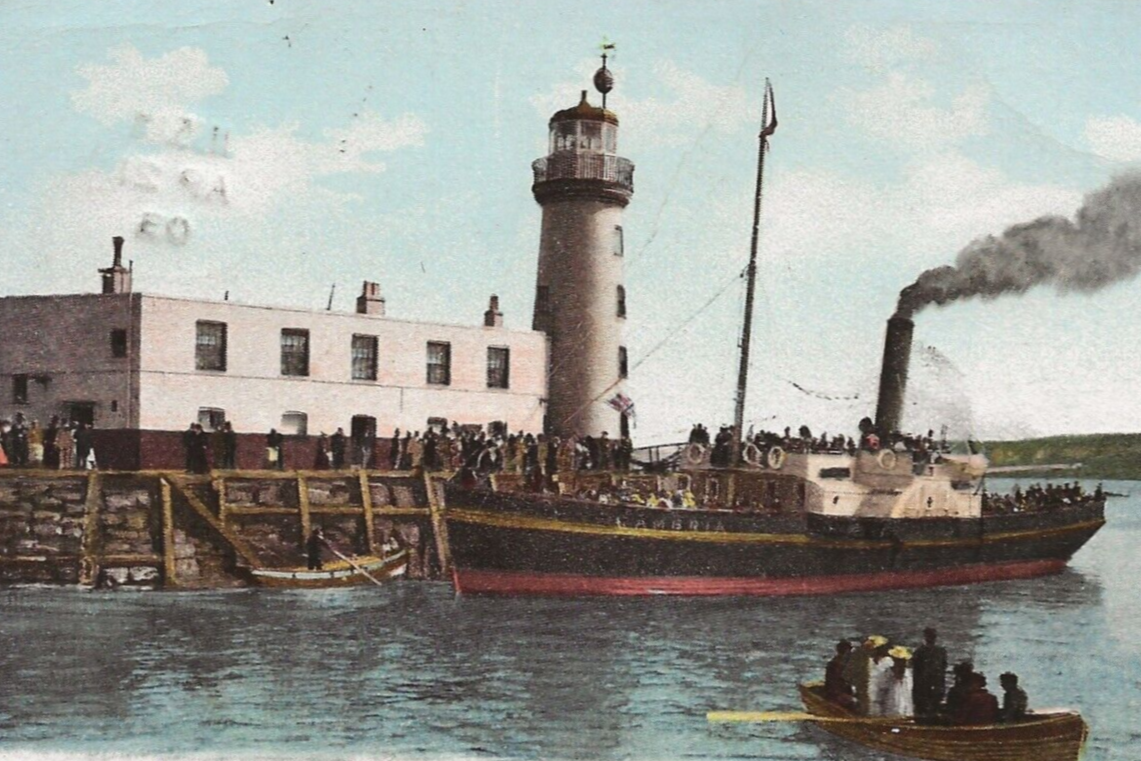
Into Scarborough! Another large game of Pluie de Balles.
by Jorit Wintjes
I. Introduction.
Saturday, July 15 saw another big game of Pluie de Balles, with around 20 participants forming two teams - British and French - of roughly equal size. Each team was then further subdivided as the action was played out on two maps which were adjoining but located into different rooms, allowing for some interesting fog-of-war effects. The British side also had a small staff team working, which tried to coordinate efforts on both maps. The scenario was unusual - at least for wargames run by the Conflict Simulation Group - in that the French had a purely defensive mission, while the British were to attack on at least two different axes. It was assumed that after an initial landing in the Worthing - Brighton area, French attempts at pushing towards London had been stalled around Tunbridge Wells, and with little progress made in the past weeks, French high command had decided to open a second front by launching a surprise attack against the North Yorkshire coast; the French plan was to land an army corps near Scarborough, push quickly towards York and then attack further southwards to draw British attention and reserves to this new theatre. The landing, however, was only partially successful. On its way to Bridlington Bay and Scarborough, the French convoy ran into an RN ambush, with torpedo boats operating out from Hull ferociously, and with little regard whatsoever for their own safety, attacking the French ships. In the end only about half the forces allocated to the landing actually made it ashore, and French high command decided to concentrate on preserving the bridgehead, putting the push towards York on hold for now. Meanwhile, British high command decided to act as quickly as possible and throw anything available in the region against the French bridgehead. This was the starting point for the game. The British objective was to neutralize the bridgehead by cutting off any French access to the Sea and limiting French mlitary options by degrading their forces significantly; the French objective was clinging on to Scarborough for dear life, and for the reinforcements that might appear in one or two days.
II. Force Structure.
French forces in the area were not insignificant: a full infantry division, 8e Division d’Infanterie, with two infantry brigades for a total 13 battalions and four batteries of six guns each, was supported by a brigade of experienced Tirailleurs Algeriennes of six battalions and a naval brigade adding a further three battalions, a battery of hotchkiss revolver guns and two makeshift armoured trains, one with train-mounted Hotchkiss guns. Furthermore, an elite brigade of heavy cavalry supported by a battery of horse artillery was available as well, as were two batteries of heavy 120mm guns and two batteries of superheavy 220mm mortars and 240mm guns resulting in an overall total of 22 battalions, 34 field guns, 16 heavy and superheavy guns and eight squadrons of cavalry.
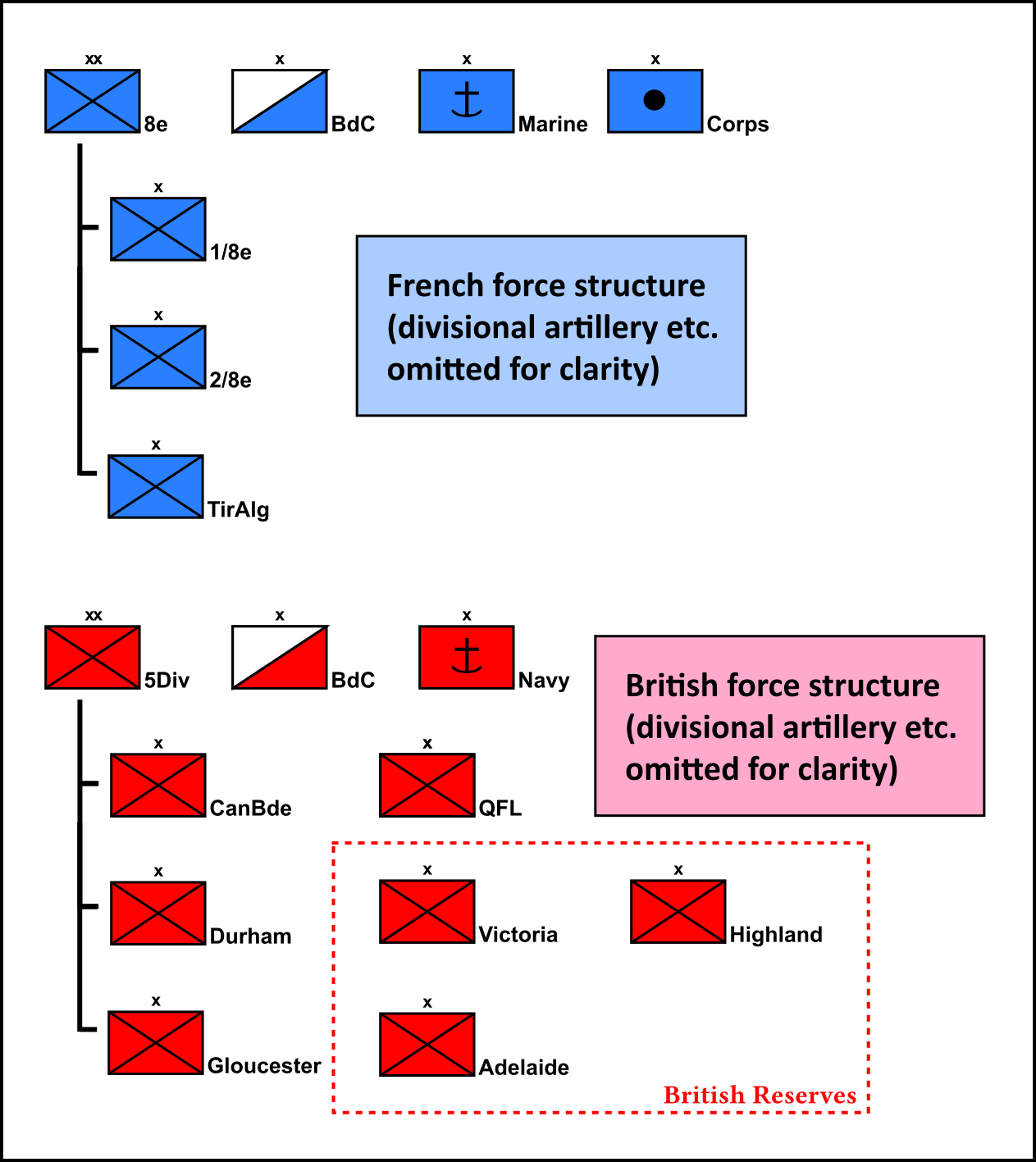
An overview over French and British force structures.
The British side fielded several brigades that were thrown together to form a makeshift division. The core of this division was formed by three brigades for a total of 12 battalions and four batteries of four guns each; as reinforcements three small brigades of eight battalions in all were available. A naval brigade of two battalions of infantry, four field guns, four heavy guns and three superheavy guns and a small mixed brigade of two weak battalions, two batteries of four guns each and two squadrons of heavy cavalry were also available, as was an elite cavalry brigade of eight squadrons of cavalry and three batteries of horse artillery with six guns each. The overall total for the British force was 24 battalions, 44 field guns, seven heavy and superheavy guns and 12 squadrons of cavalry. In all, both sides were fairly evenly matched, which was a distinct disadvantage for the British side as it had to attack an enemy in entrenched positions. While two heavy railway guns were available to the British, the French had an immobilized ironclad in Scarborough harbour capable of indirectly firing at targets outside the town.
III. Initial Dispositions.
On the Scarborough map the French decided to deploy both brigades of 8e Division as well as all the heavy and superheavy artillery, creating a formidable if slightly overstretched ring around the town. On the northern map the naval brigade occupied the village of Scalby, with the Tirailleurs Algeriennes positioned between the village and the sea. Assessing the topography to be better suited to cavalry operations, the cavalry brigade was also located on the northern map and split into two parts, with one operating in front of the Tirailleurs, the other east of Scalby.
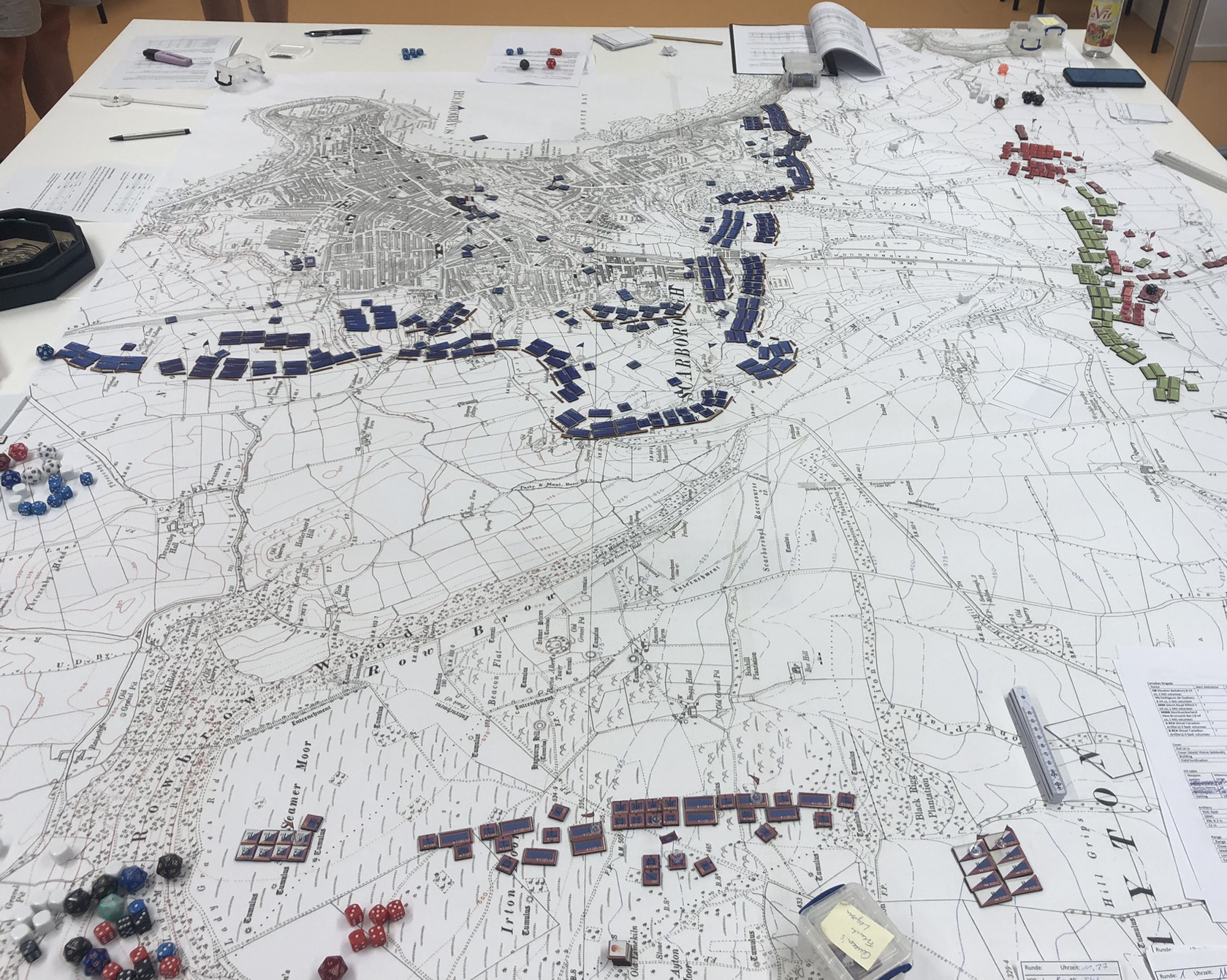
Initial dispositions on the Scarborough map.
The British decided to put the navy brigade, one of the infantry brigades and the small mixed brigade on the Scarborough map and another infantry brigade as well as the cavalry brigade on the northern map; the two armoured trains also operated on that map.
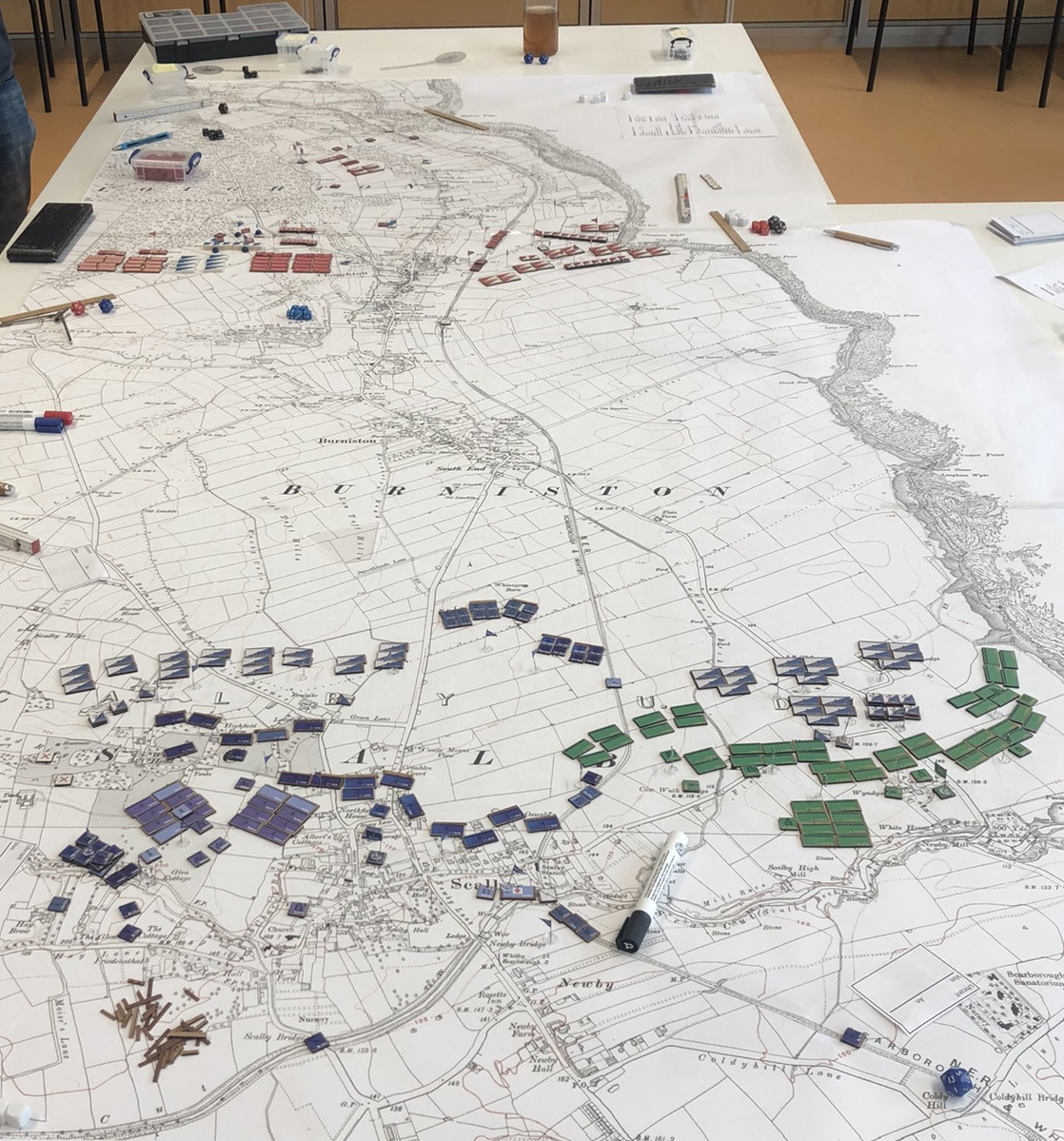
Initial dispositions on the northern map.
IV. British difficulties.
Once the game started, things started to turn badly for the British side pretty soon. On the northern map the French had made clever use of the terrain and put artillery on a key height, thereby frustrating attempts by British cavalry to break into French positions. Several times they reported back to the British staff that their attack was essentially stalled, and that putting pressure on the French in such a way as to make them pull units out of their defensive positions in Scarborough and send them to the northern map was not going to happen. The French armoured trains, while in reality only a nuisance, further added to British dismay; cleverly acting in conjuction with French field artillery, the Hotchkiss train managed to pester the British for hours before it finally fell victim to British horse artillery.
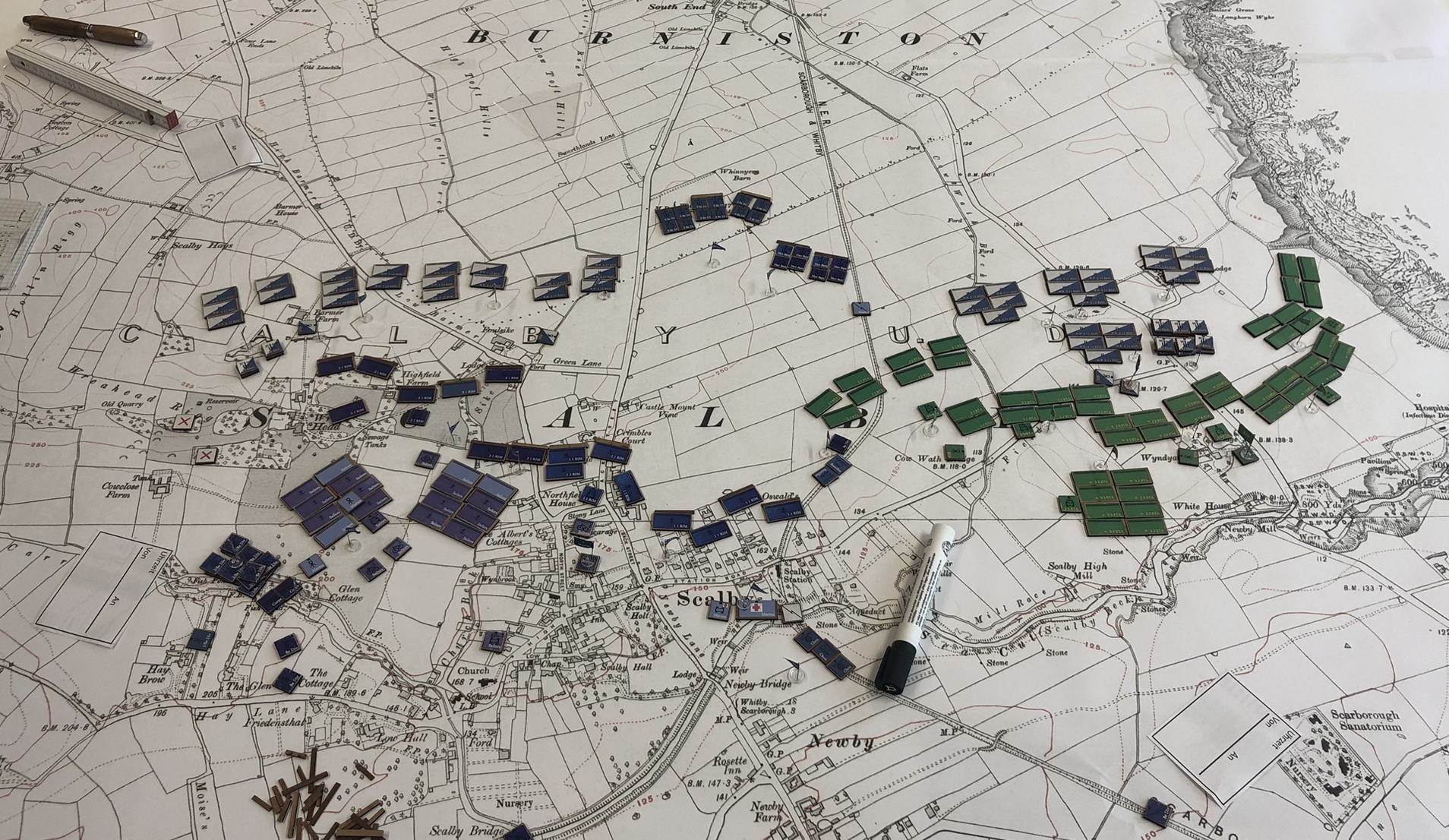
French defences on the northern map; note the field artillery battery on a spur south of Burniston.
While the northern map thus saw little British progress, developments on the Scarborough map were close to disastrous. The British navy brigade had launched an ill-advised frontal attack against French positions, supported by one infantry brigade; heavily outgunned, the attack failed already in its initial stages, with French heavy artillery taking out all British heavy guns as well as both brigade HQs within an hour.
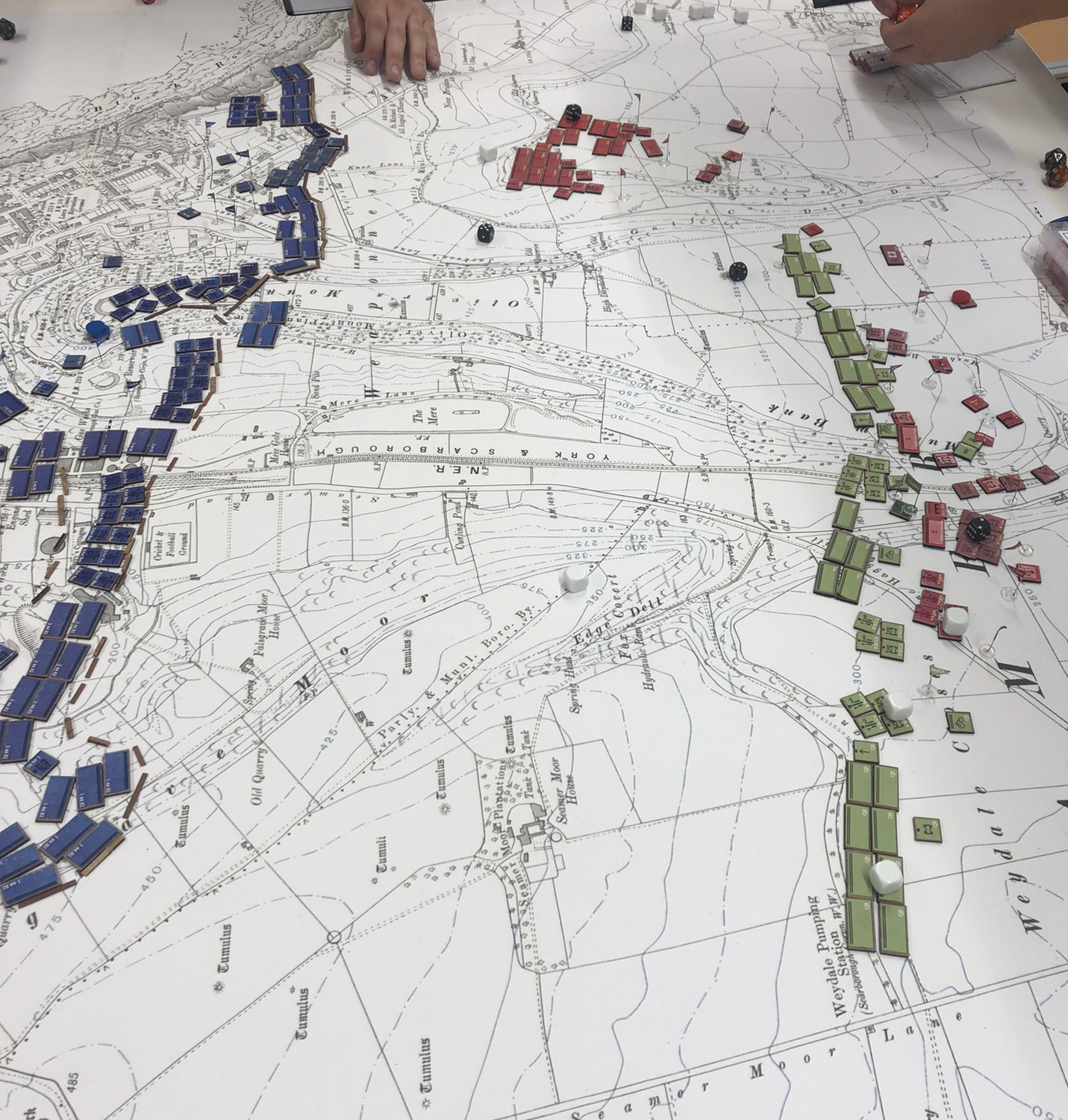
The ill-fated attack begins to develop.
The remaining British forces tried to consolidate around the one remaining brigade and stayed inactive for the time being. The British were in a difficult position: French heavy artillery could cover nearly all approaches to Scarborough and had taken not only a physical toll but also impacted on the force commanders’ morale. It was only after the arrival of reinforcements that a new plan for attacking the city was made.
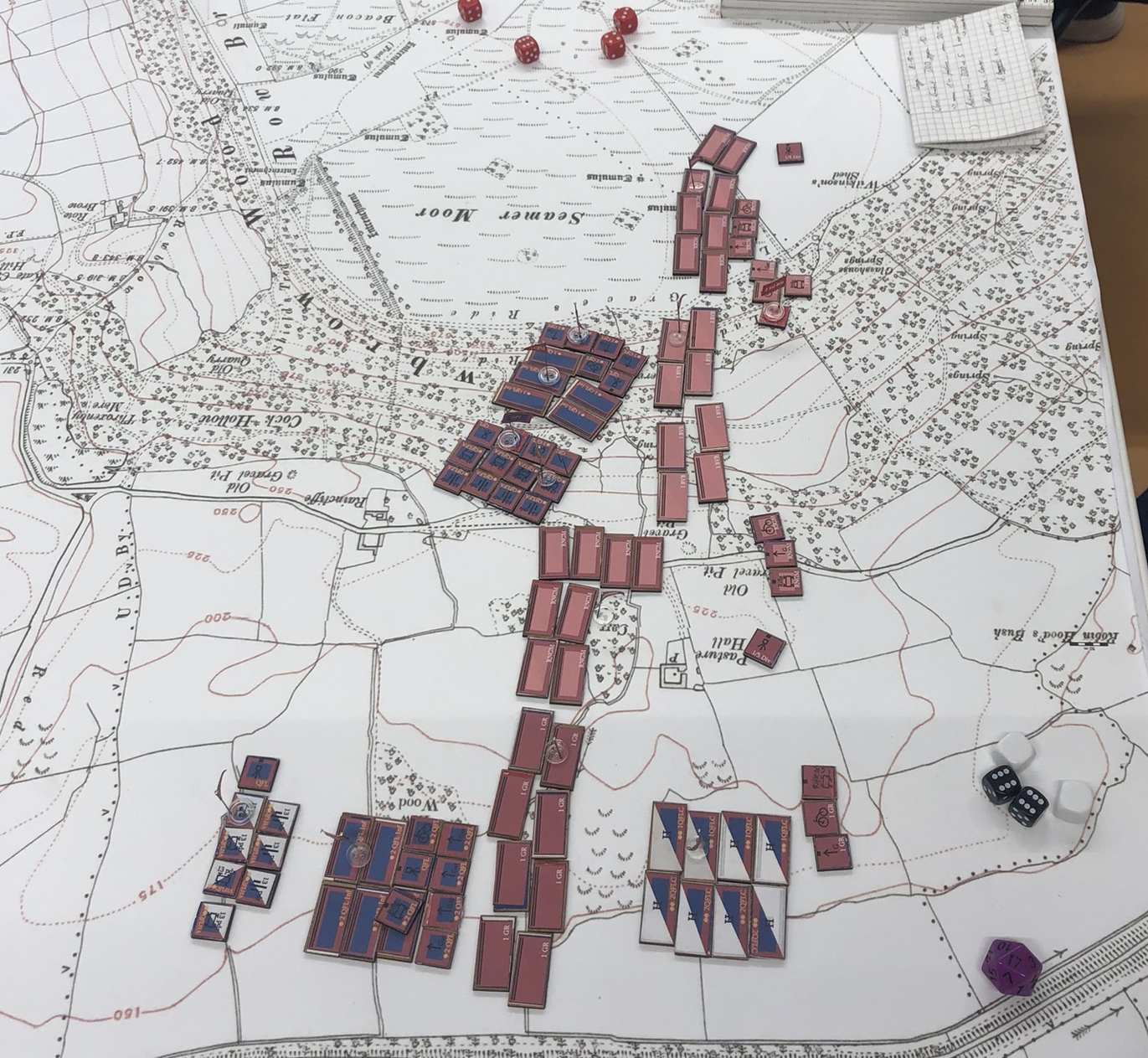
Consolidation of Forces.
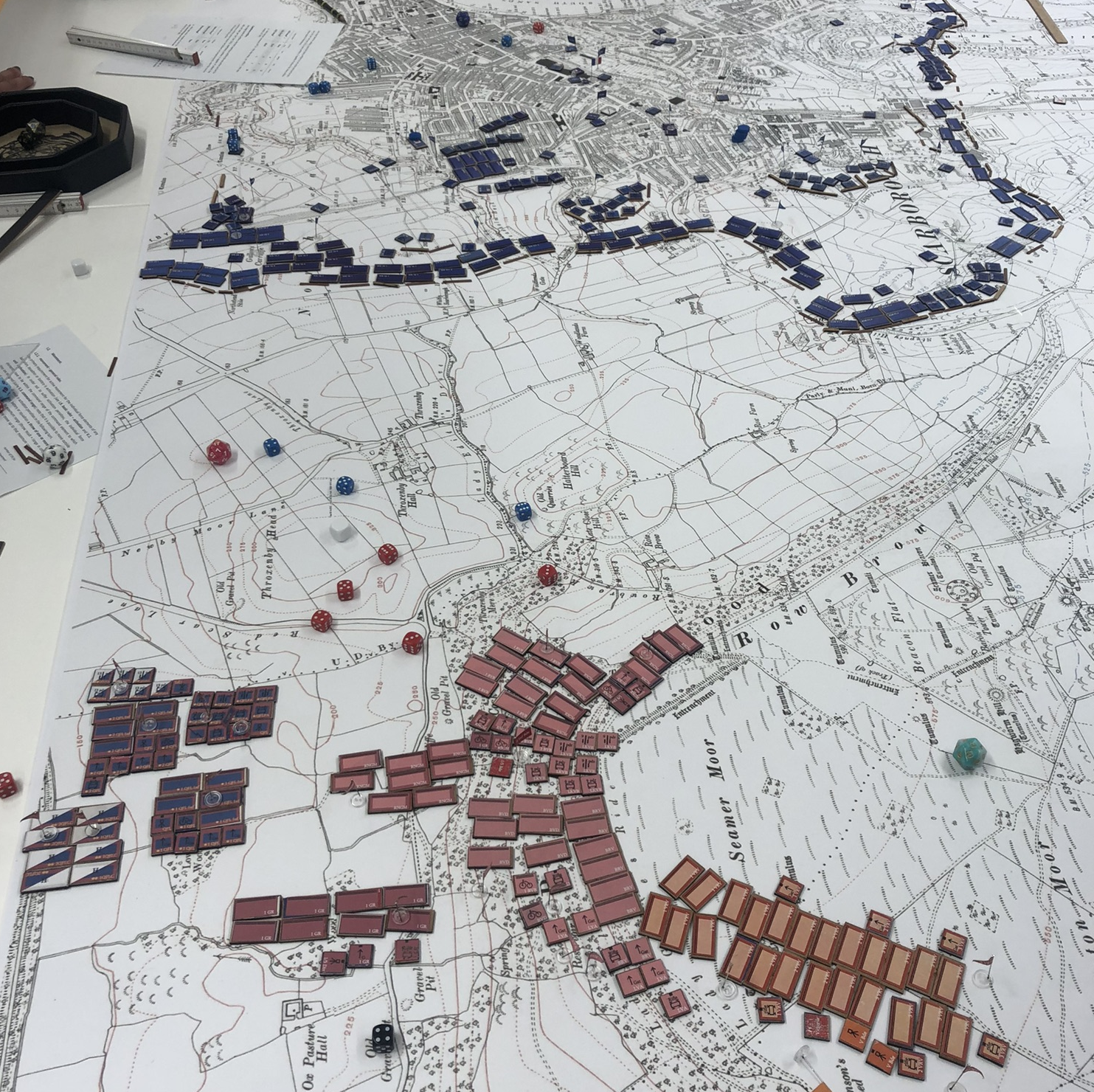
Reinforcements appear.
It included moving two brigades’ worth of men and materiel through a narrow wood allowing for an undetected approach to the city, and it was as madcap a plan as the umpires have ever seen. Soon the two brigades were strung out among the trees, and invariably the French became aware of their presence and started hitting them with artillery fire. Desaster would certainly have been the result had the British staff not at that very moment decided to throw some of his forces into the northern map - into the rear of the French.
V. Turning the tide.
When the British brigade appeared in Newby, French commanders on the northern map were stunned. Up to that point they had been in contact every now and then with French forces on the Scarborough map, and the situation was under control there, or so had thought. British forces suddenly appearing in their rear was interpreted as Scarborough being about to fall, which at that point was incorrect. It did however create a huge problem for French force commanders on the northern map, as suddenly many of their carefully-chosen positions were in range of British artillery firing at them from behind!
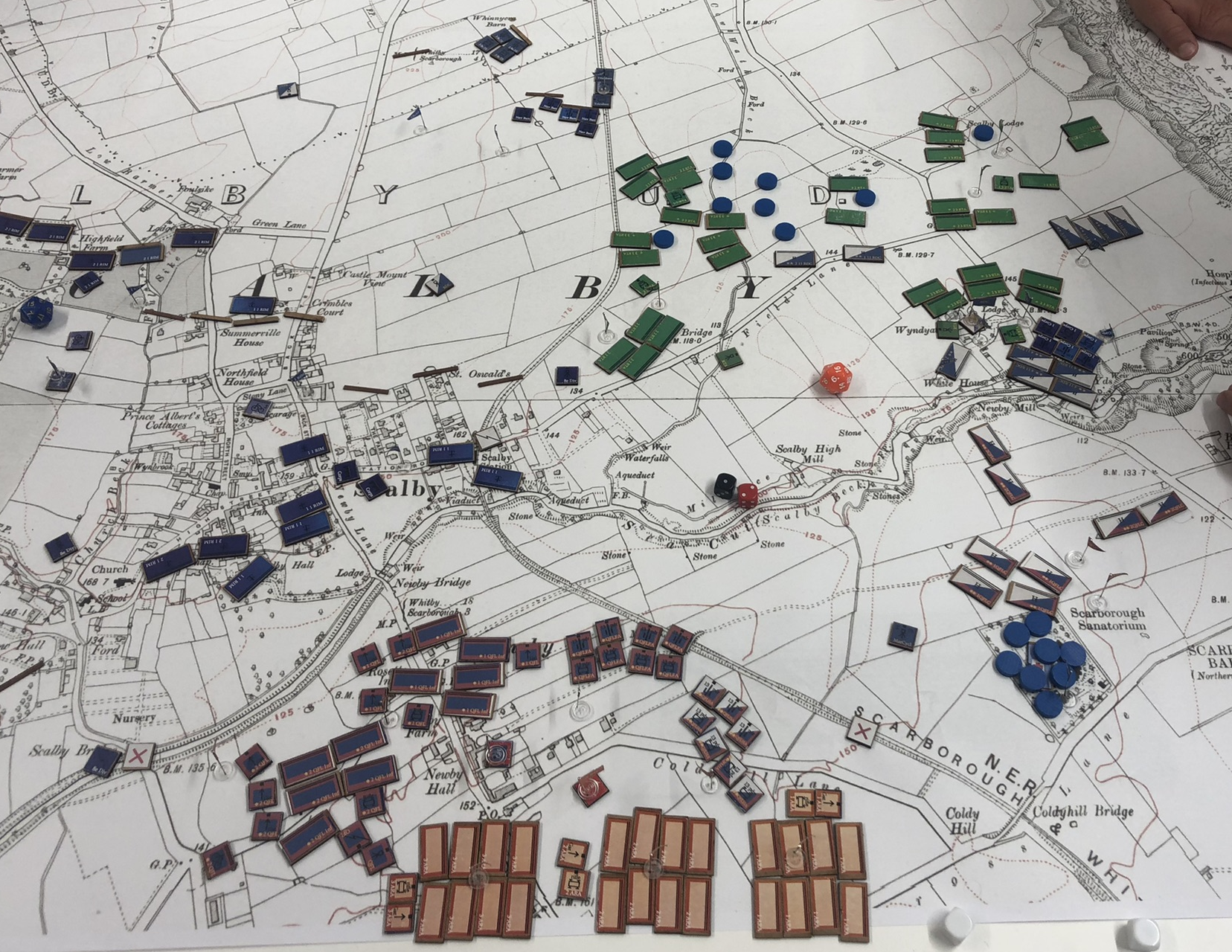
In the rear of the enemy!
At the same time the battery commanding much of the approaches to Scalby was finally silenced, creating an opening for the British cavalry brigade - which, quite unlike what one would expect from cavalry, did not charge headlong to glory or the grave but did the sensible thing and started to move up horse artillery to pound French positions. Soon a second British brigade was appearing in Scalby, and after some time this brigade turned back again and launched an attack Scarborough. The defenders of the town had expected such a turn of events, and the attack was met with whithering fire and initially was close to breaking. British forces managed to get a foothold in French positions, but at great cost, and for a moment it seemed the British attack had stalled.
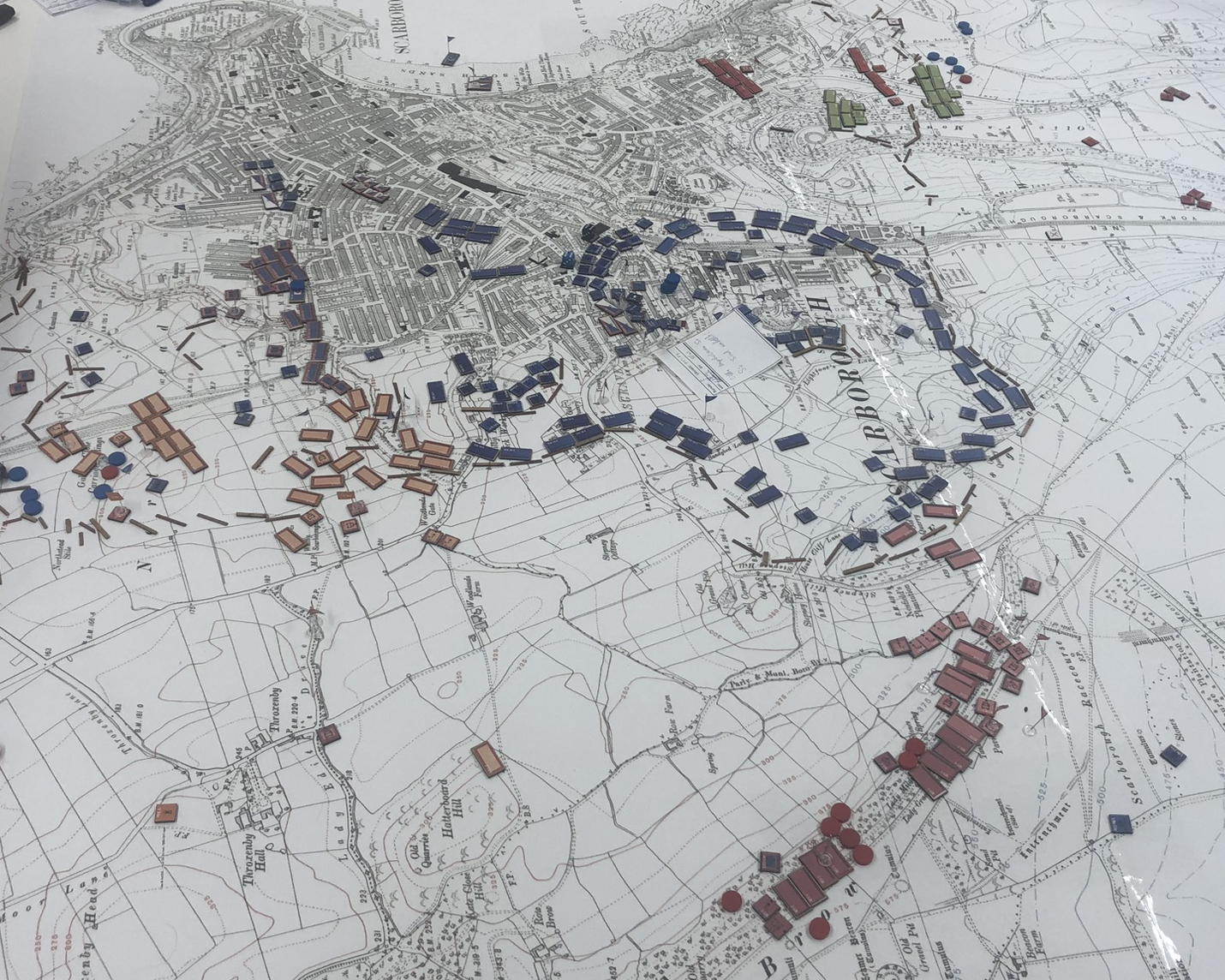
Heavy fighting for Scarborough
However, in order to concentrate forced to repel this attack, the French had pulled back from other positions, and at that point not only did the attack column finally emerged from the wood putting pressure on a second point of the French defence perimeter, but the remnants of the navy brigade also launched another attack on their sector of the defence perimeter.
VI. A stunning victory.
The appearance of British forces behind their own lines had a major impact on French forces on the northern map. Not only did they suddenly lose communications with their divisional HQ in Scarborough, British artillery was also suddenly able to fire into French positions from behind. Combined with an increasing toll exacted by British railway artillery French forces between Scalby and the coast started to break.
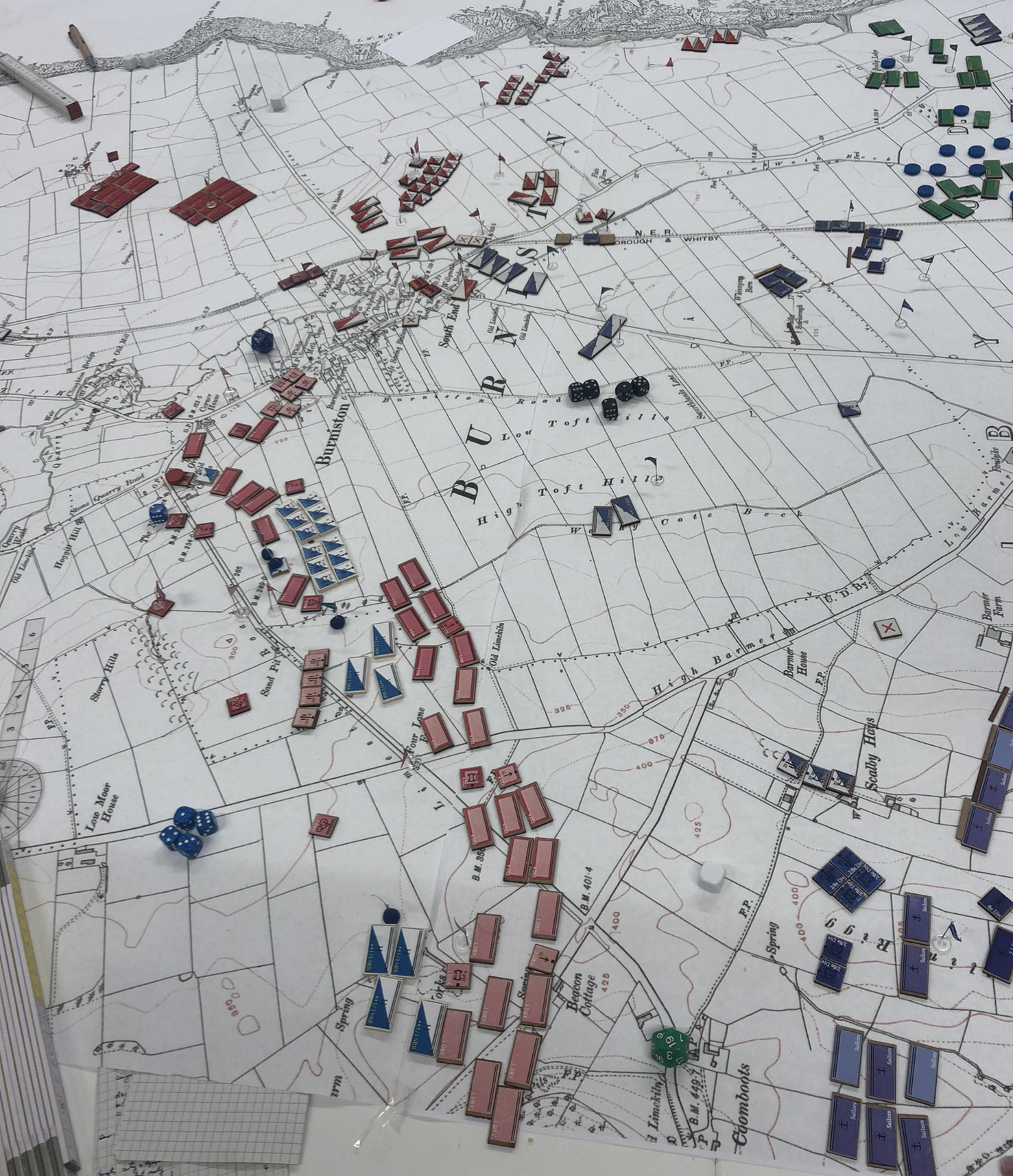
British forces gain the upper hand on the northern map.
The Tirailleurs lost their brigade HQ, and with their artillery support gone, faced British horse artillery which was mercilessly firing into the French companies from just outside rifle range. In Scarborough, British forces were managing to break into the defence perimeter at three different positions, and while the French commander managed to pull back some of his forces to form a new perimeter, British forces attacking from New Brighton into the city quickly managed to cut off French forces from the sea. With his defences crumbling and British cavalry suddenly appearing in front of the French divisional HQ, it was decided to end the game.
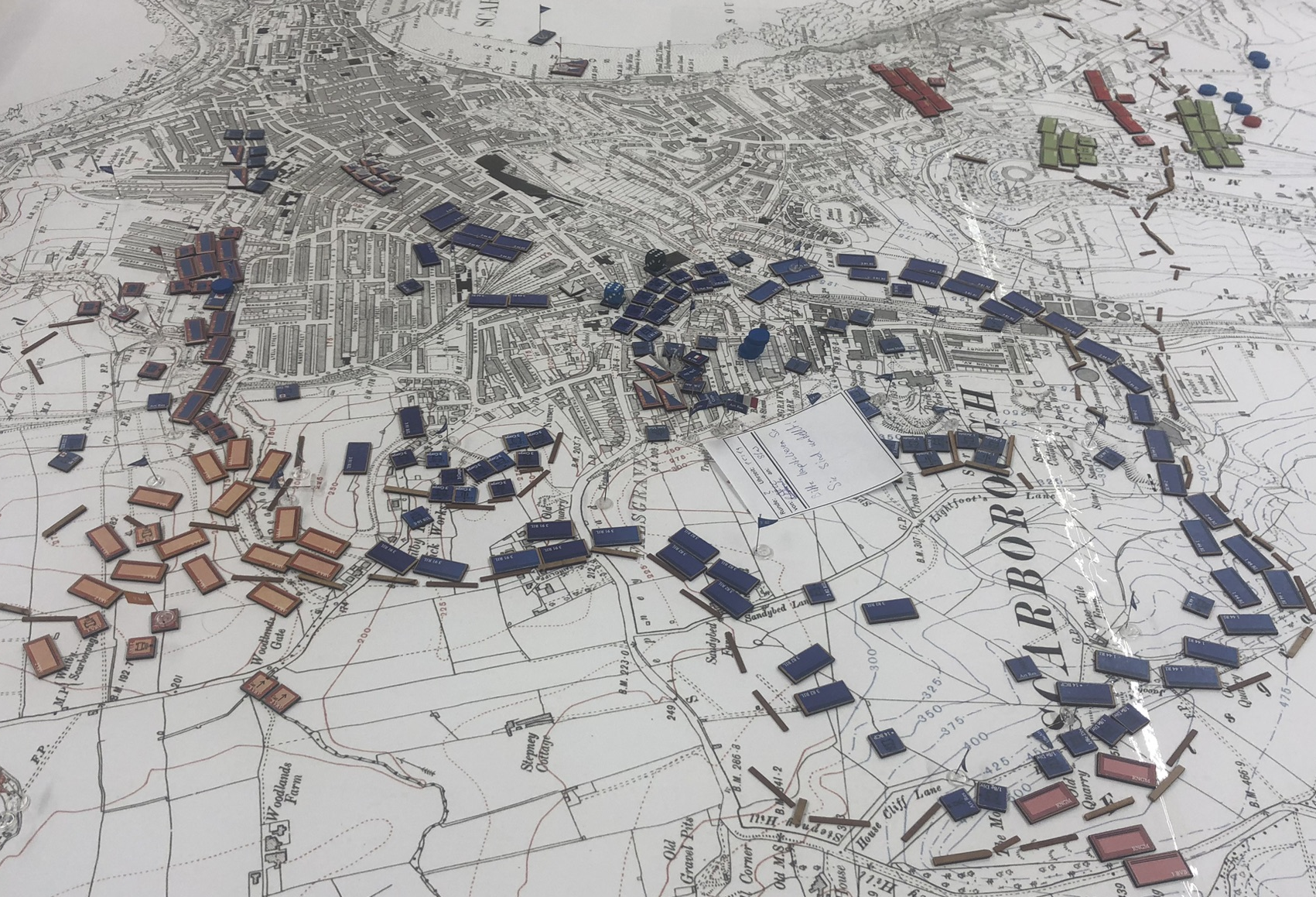
French forces in the city at the end of the battle.
The French team had fought cleverly and with tenacity, but it had been soundly beaten, British victory was complete.
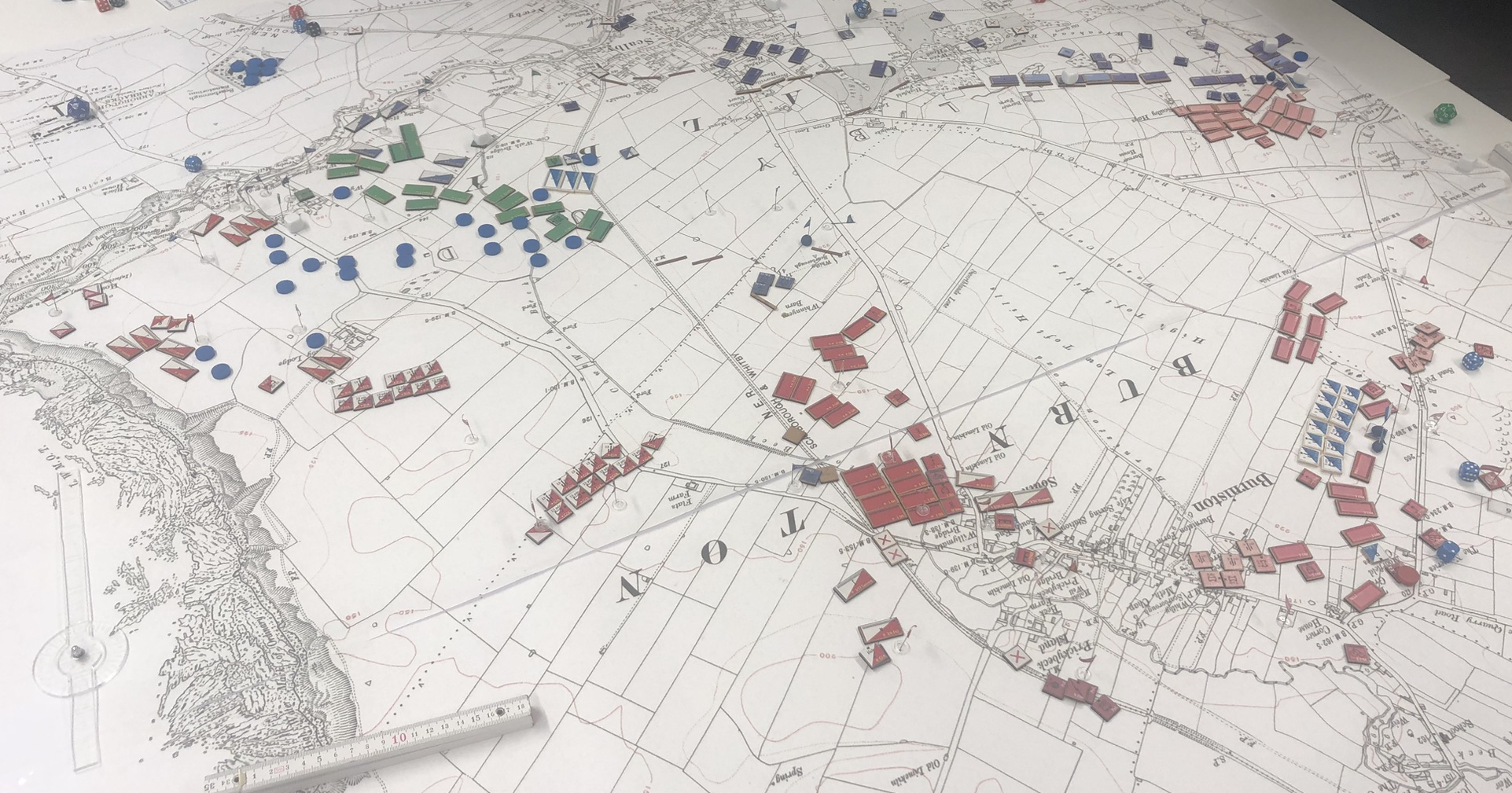
The end on the northern map.
VII. Some final thoughts.
Despite their initial setbacks which were perilously close to catastrophic, the British managed to pull off a stunning victory. While French defensive positions around Scarborough were formidable, they had a crucial flaw in that the connection between the defenders of Scarborough and the forces in and around Scalby was tenuous in the beginning, and rapidly evaporated when the French were drawn into the messy fighting on the northern map. This created an opportunity for throwing two brigades from the Scarborough map into the rear of the French units on the northern map, and the British staff managed to exploit that opportunity.
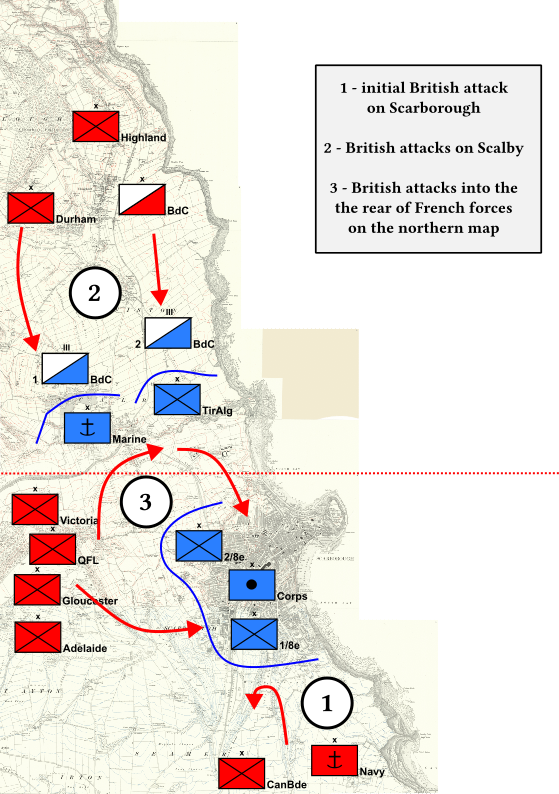
Overview over the action.
In that respect, the game was very successful as it showed that success or failure can depend on how the staff assesses the situation. Pluie de Balles also once again showed its great potential for producing fog-of-war, as force commanders concentrated on the fight at hand at the expense of writing reports back to their HQ; the British staff repeatedly cried out for situation reports, and while some force commanders did make a determined effort of providing the staff with information, others showed greater inclination to clobber their opponent than to write reports back to the staff. As for the overall scenario, initial doubts whether anything close to a victory was at all achievable for the British was dispelled by the outcome. Scarborough is certainly a place that the Conflict Simulation Group will visit again!